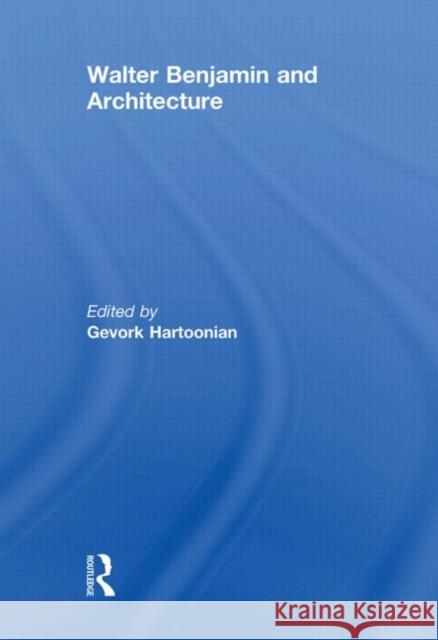Walter Benjamin and Architecture » książka
Walter Benjamin and Architecture
ISBN-13: 9780415482929 / Angielski / Twarda / 2009 / 182 str.
Walter Benjamin and Architecture
ISBN-13: 9780415482929 / Angielski / Twarda / 2009 / 182 str.
(netto: 692,55 VAT: 5%)
Najniższa cena z 30 dni: 705,23
ok. 22 dni roboczych
Bez gwarancji dostawy przed świętami
Darmowa dostawa!
The essays compiled in this book explore aspects of Walter Benjamin's discourse that has contributed to the formation of contemporary architectural theories. Even though issues such as technology and history have been considered central to the very modernity of architecture, Walter Benjamin's reflection on these subjects has elevated the discussion to a critical level. And this in the context of digitalization of architecture where one's perception of the object is transformed beyond its auratic dimension; a process by which architecture is pushed into the whirlpool of what Benjamin called the phantasmagoria of the commodity world.This historical development demands a rewriting of the implications of the crisis of architecture. The project's importance has to do with the early modernist infatuation with the machine, but also the current use of electronic technologies to the point that, it is not the image of the machine anymore but the very technique itself that determines the processes of design and the final form. On the other hand, Benjamin's anthropological approach to the historicity of architecture should be considered as a major way out of historicism and the inclination to gauge the contemporaneity of architecture in association with technological progress. This book was published as a special issue of Architectural Theory Review.
The essays compiled in this book explore aspects of Walter Benjamin’s discourse that has contributed to the formation of contemporary architectural theories. Even though issues such as technology and history have been considered central to the very modernity of architecture, Walter Benjamin’s reflection on these subjects has elevated the discussion to a critical level. And this in the context of digitalization of architecture where one’s perception of the object is transformed beyond its auratic dimension; a process by which architecture is pushed into the whirlpool of what Benjamin called the phantasmagoria of the commodity world. This historical development demands rewriting the implications of the crisis of architecture. The project’s importance has to do with the early modernist infatuation with the machine, but also the current use of electronic technologies to the point that, it is not the image of the machine anymore but the very technique itself that determines the processes of design and the final form. On the other hand, Benjamin’s anthropological approach to the historicity of architecture should be considered as a major way out of historicism and the inclination to gauge the contemporaneity of architecture in association with technological progress.
This book was published as a special issue of Architectural Theory Review.











